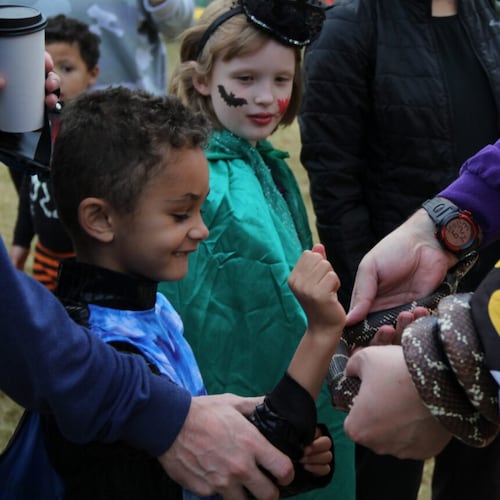To learn more about early child development:
A new study by Atlanta-based researchers shows it’s possible to identify signs of autism in the first six months of a child’s life by tracking eye movements.
That’s nearly four years sooner than the average age of diagnosis in the United States, and could lead to earlier intervention techniques.
The study found that infants later diagnosed with autism make less eye contact with caregivers at an earlier age.
“Before babies crawl or walk, they explore the world with their eyes; by measuring what they look at and what they don’t, we learn about their social development and the experiences that will continue to guide their learning” said Warren Jones, the lead author of the study.
“And we’ve known that deficits in eye contact are a hallmark of autism in later life. Children with autism tend to make less eye contact. In this study we were able to track that down in early infancy, from the age of 2 months.”
Teams from Marcus Autism Center, Children’s Healthcare of Atlanta and Emory University School of Medicine followed 110 infants over the first three years of their lives, using sophisticated equipment that tracked eye movements at the rate of 30 times per second.
“If we were able to use similar technologies to identify early signs of social disability, we could then consider interventions to build on that early eye-looking and help reduce some of the associated disabilities that often accompany autism,” Jones said.
The eye-tracking devices measured the way infants looked at and responded to social cues as they viewed caregivers during playful interaction. Of the 110 children, Jones said, 51 were at low risk of autism and 59 were at high risk, meaning they had an older sibling already diagnosed, which increases risk 20 fold.
“What we found was that infants later diagnosed with autism were looking less and less at moms’ eyes throughout the first two years of life,” Jones said. “With this technology it is possible to identify signs of autism in the first six months. That’s really a huge part of why we are so excited about this.”
The findings are being reported in Wednesday’s online publication of the journal Nature.
Jones said work is underway to see if the results hold up with a larger sample group, as well as to correlate eye-tracking measures with gene and brain growth data.
Although the results indicate that attention to others’ eyes is already declining by 2 to 6 months in infants later diagnosed with autism, eye contact does not appear to be entirely absent. If infants were identified at this early age, interventions could more successfully build on the levels of eye contact that are present.
“Eye contact plays a key role in social interaction and development, and in the study, those infants whose levels of eye contact diminished most rapidly were also those who were most disabled later in life,” Jones said. “This early developmental difference also gives researchers a key insight for future studies.”
The study, Attention to Eyes is Present But In Decline in 2-6 Month-Olds Later Diagnosed with Autism, was funded by the Simons Foundation, the National Institute of Mental Health, the Marcus Foundation and the Whitehead Foundation.
Jones cautioned that the differences researchers observed are not something parents or even professionals can observe. Highly sophisticated measurements were necessary to detect decline of eye fixation over time.
Parents with concerns should talk to their pediatrician, or contact professionals in the field.
About the Author
Keep Reading
The Latest
Featured


